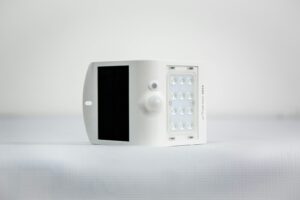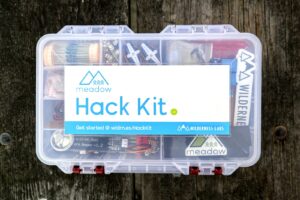Understanding the Interoperability of IoT Devices
Interoperability of IoT Devices is a critical factor in ensuring the seamless integration and functionality of various technologies within a connected ecosystem. As businesses in regions like Saudi Arabia, UAE, Riyadh, and Dubai continue to adopt IoT solutions, the ability of devices to work together efficiently becomes increasingly important. The concept of interoperability refers to the capability of different IoT devices, systems, and platforms to communicate, exchange data, and operate in a cohesive manner, regardless of their manufacturers or technical specifications.
In the context of smart cities and advanced industrial applications, the need for interoperability is paramount. For example, in a smart city like Dubai, where numerous IoT devices are deployed to manage traffic, energy consumption, and public safety, the seamless interaction between these devices is crucial for optimizing city operations. Without proper interoperability, data silos could form, leading to inefficiencies and potential failures in system performance. Therefore, understanding and evaluating the interoperability of IoT devices is essential for organizations looking to achieve their digital transformation goals.
Moreover, as IoT ecosystems become more complex, the challenges associated with ensuring interoperability increase. Different devices may use varying communication protocols, data formats, and security standards, making it difficult to achieve consistent performance across the entire system. Businesses must therefore adopt a structured approach to evaluate and enhance the interoperability of their IoT devices, ensuring that they can support the organization’s broader objectives, whether in smart city management, industrial automation, or other applications.
Key Metrics for Evaluating Interoperability
To effectively evaluate the interoperability of IoT devices, organizations need to focus on specific key metrics that provide insights into how well these devices work together. One of the most critical metrics is protocol compatibility, which assesses the ability of IoT devices to communicate using the same or compatible protocols. This metric is particularly important in environments where multiple devices from different manufacturers are used, as protocol compatibility ensures that these devices can exchange data without issues.
Another important metric is data format consistency. IoT devices often generate and process data in different formats, which can lead to challenges in data integration and analysis. By evaluating data format consistency, organizations can determine whether their IoT devices are capable of generating and interpreting data in a way that is compatible with other devices and systems within the ecosystem. This metric is especially relevant in industries where data accuracy and timeliness are critical, such as healthcare and finance.
Latency and response time is another key metric for evaluating interoperability. In real-time IoT applications, such as those used in smart cities or industrial automation, the speed at which devices communicate and respond to commands is crucial. High latency can lead to delays in decision-making and operational inefficiencies. Therefore, organizations must assess the latency of their IoT devices to ensure that they meet the required performance standards for their specific use cases.
Best Practices for Enhancing IoT Interoperability
Achieving optimal interoperability of IoT devices requires a combination of best practices that address both technical and organizational challenges. One of the most effective practices is the adoption of open standards. Open standards provide a common framework for device communication, data exchange, and security, making it easier for devices from different manufacturers to work together. By adopting open standards, businesses in the UAE, Saudi Arabia, and other regions can ensure that their IoT systems are future-proof and scalable, capable of integrating new devices and technologies as they emerge.
Another best practice is the implementation of middleware solutions. Middleware acts as a bridge between different IoT devices and platforms, facilitating data translation, protocol conversion, and communication management. By using middleware, organizations can overcome the challenges associated with protocol compatibility and data format inconsistency, enabling their IoT devices to interact seamlessly. This approach not only enhances interoperability but also simplifies the integration process, reducing the time and resources required to deploy IoT solutions.
Continuous testing and validation are also critical for maintaining high levels of interoperability in IoT systems. Regular testing helps identify potential issues with device compatibility, data exchange, and system performance before they escalate into more significant problems. By incorporating testing and validation into the IoT deployment process, businesses can proactively address interoperability challenges, ensuring that their devices and systems continue to operate efficiently as they scale.
Conclusion: The Strategic Importance of IoT Interoperability
In conclusion, the interoperability of IoT devices is a strategic priority for organizations looking to harness the full potential of IoT technologies. As the adoption of IoT continues to grow in regions like Saudi Arabia, UAE, Riyadh, and Dubai, businesses must focus on evaluating and enhancing the interoperability of their devices to achieve seamless integration and optimal performance. By tracking key metrics such as protocol compatibility, data format consistency, and latency, and by adopting best practices like open standards, middleware solutions, and continuous testing, organizations can ensure that their IoT systems are robust, scalable, and aligned with their broader digital transformation goals.
In this rapidly evolving technological landscape, the ability to achieve effective interoperability will be a key differentiator for businesses. Those that invest in understanding and improving the interoperability of their IoT devices will be better positioned to capitalize on the opportunities presented by smart cities, industrial automation, and other IoT-driven innovations, ultimately leading to greater business success and competitive advantage.
—
#IoTInteroperability, #SmartCities, #DigitalTransformation, #OpenStandards, #MiddlewareSolutions, #IoTIntegration, #SaudiArabia, #UAE, #Riyadh, #Dubai













